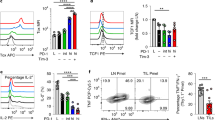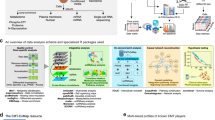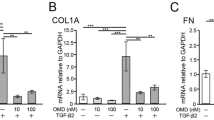Abstract
Aim:
To elucidate the molecular mechanisms underlying the immunosuppressive effects of emodin isolated from Rheum palmatum L.
Methods:
Human T cells were isolated from the peripheral venous blood of 10 healthy adult donors. Cell viability was analyzed with MTT assay. AO/EB and Annexin V/PI staining and DNA damage assay were used to detect cell apoptosis. Fluorescence staining was used to detect the levels of ROS, the mitochondrial membrane potential and intracellular Ca2+. Colorimetry was used to detect the levels of MDA and total SOD and GSH/GSSG ratio. The expression and activity of caspase-3, -4, and -9 were detected with Western blotting and a fluorometric assay. Western blotting was also used to detect the expression of Bcl-2, Bax, cytochrome C, and endoplasmic reticulum (ER) markers.
Results:
Emodin (1, 10, and 100 μmol/L) inhibited the growth of human T cells and induced apoptosis in dose- and time dependent manners. Emodin triggered ER stress and significantly elevated intracellular free Ca2+ in human T cells. It also disrupted mitochondrial membrane potential, and increased cytosolic level of cytochrome C, and the levels of activated cleavage fragments of caspase-3, -4, and -9 in human T cells. Furthermore, emodin significantly increased the levels of ROS and MDA, inhibited both SOD level and GSH/GSSG ratio in human T cells, whereas co-incubation with the ROS scavenger N-acetylcysteine (NAC, 20 μmol/L) almost completely blocked emodin-induced ER stress and mitochondrial dysfunction in human T cells, and decreased the caspase cascade-mediated apoptosis.
Conclusion:
Emodin exerts immunosuppressive actions at least partly by inducing apoptosis of human T cells, which is triggered by ROS-mediated ER stress and mitochondrial dysfunction.
Similar content being viewed by others
Log in or create a free account to read this content
Gain free access to this article, as well as selected content from this journal and more on nature.com
or
References
Bettini M, Vignali DA . Regulatory T cells and inhibitory cytokines in autoimmunity. Curr Opin Immunol 2009; 21: 612–8.
Migita K, Origuchi T, Kawabe Y, Tominaga M, Ida H, Kawakami A, et al. FK506 markedly enhances apoptosis of antigen-stimulated peripheral T cells by down-regulation of Bcl-xL . Transplantation 1999; 68: 1018–23.
Antunes RF, Brandao C, Carvalho G, Girao C, Arosa FA . Red blood cells carry out T cell growth and survival bioactivities that are sensitive to cyclosporine A. Cell Mol Life Sci 2009; 66: 3387–98.
Hester J, Schiopu A, Nadig SN, Wood KJ . Low-dose rapamycin treatment increases the ability of human regulatory T cells to inhibit transplant arteriosclerosis in vivo. Am J Transplant 2012; 12: 2008–16.
Ding Y, Zhao L, Mei H, Zhang SL, Huang ZH, Duan YY, et al. Exploration of Emodin to treat alpha-naphthylisothiocyanate-induced cholestatic hepatitis via anti-inflammatory pathway. Eur J Pharmacol 2008; 590: 377–86.
Basu S, Ghosh A, Hazra B . Evaluation of the antibacterial activity of Ventilago madraspatana Gaertn, Rubia cordifolia Linn and Lantana camara Linn: isolation of emodin and physcion as active antibacterial agents. Phytother Res 2005; 19: 888–94.
Huang HC, Chang JH, Tung SF, Wu RT, Foegh ML, Chu SH . Immunosuppressive effect of emodin, a free radical generator. Eur J Pharmacol 1992; 211: 359–64.
Liu YX, Shen NY, Liu C, Lv Y . Immunosuppressive effects of emodin: an in vivo and in vitro study. Transplant Proc 2009; 41: 1837–9.
Chen F, Ni Y, Ye Y, Sun H, Li X, Xu S . Stephanthraniline A inhibits the proliferation and activation of T cells in vitro and in vivo. Eur J Pharmacol 2012; 685: 186–97.
Zhang XR, Zhou WX, Zhang YX, Qi CH, Yan H, Wang ZF, et al. Macrophages, rather than T and B cells are principal immunostimulatory target cells of Lycium barbarum L polysaccharide LBPF4-OL. J Ethnopharmacol 2011; 136: 465–72.
Mao YX, Chen YJ, Ge Y, Ma HB, Yu JF, Wu HY, et al. Recombinant human B7-H4 expressed in Escherichia coli inhibits T lymphocyte proliferation and IL-2 secretion in vitro. Acta Pharmacol Sin 2006; 27: 741–6.
Qian J, Jiang F, Wang B, Yu Y, Zhang X, Yin Z, et al. Ophiopogonin D prevents H2O2-induced injury in primary human umbilical vein endothelial cells. J Ethnopharmacol 2010; 128: 438–45.
He J, Huang B, Ban X, Tian J, Zhu L, Wang Y . In vitro and in vivo antioxidant activity of the ethanolic extract from Meconopsis quintuplinervia. J Ethnopharmacol 2012; 141: 104–10.
Qu K, Xu X, Liu C, Wu Q, Wei J, Meng F, et al. Negative regulation of transcription factor FoxM1 by p53 enhances oxaliplatin-induced senescence in hepatocellular carcinoma. Cancer Lett 2013; 331: 105–14.
Hsia TC, Yang JS, Chen GW, Chiu TH, Lu HF, Yang MD, et al. The roles of endoplasmic reticulum stress and Ca2+ on rhein-induced apoptosis in A-549 human lung cancer cells. Anticancer Res 2009; 29: 309–18.
He XL, Zhang P, Dong XZ, Yang MH, Chen SL, Bi MG . JR6, a new compound isolated from Justicia procumbens, induces apoptosis in human bladder cancer EJ cells through caspase-dependent pathway. J Ethnopharmacol 2012; 144: 284–92.
Wang W, Bai Z, Zhang F, Wang C, Yuan Y, Shao J . Synthesis and biological activity evaluation of emodin quaternary ammonium salt derivatives as potential anticancer agents. Eur J Med Chem 2012; 56: 320–31.
Imanishi Y, Maeda N, Otogawa K, Seki S, Matsui H, Kawada N, et al. Herb medicine Inchin-ko-to (TJ-135) regulates PDGF-BB-dependent signaling pathways of hepatic stellate cells in primary culture and attenuates development of liver fibrosis induced by thioacetamide administration in rats. J Hepatol 2004; 41: 242–50.
Huang HC, Chu SH, Chao PD . Vasorelaxants from Chinese herbs, emodin and scoparone, possess immunosuppressive properties. Eur J Pharmacol 1991; 198: 211–3.
Kuo YC, Meng HC, Tsai WJ . Regulation of cell proliferation, inflammatory cytokine production and calcium mobilization in primary human T lymphocytes by emodin from Polygonum hypoleucum Ohwi. Inflamm Res 2001; 50: 73–82.
Hildeman DA, Mitchell T, Kappler J, Marrack P . T cell apoptosis and reactive oxygen species. J Clin Invest 2003; 111: 575–81.
Ray PD, Huang BW, Tsuji Y . Reactive oxygen species (ROS) homeostasis and redox regulation in cellular signaling. Cell Signal 2012; 24: 981–90.
Teixeira HD, Schumacher RI, Meneghini R . Lower intracellular hydrogen peroxide levels in cells overexpressing CuZn-superoxide dismutase. Proc Natl Acad Sci U S A 1998; 95: 7872–5.
Kwong LK, Sohal RS . Substrate and site specificity of hydrogen peroxide generation in mouse mitochondria. Arch Biochem Biophys 1998; 350: 118–26.
Feldman DE, Chauhan V, Koong AC . The unfolded protein response: a novel component of the hypoxic stress response in tumors. Mol Cancer Res 2005; 3: 597–605.
Oyadomari S, Mori M . Roles of CHOP/GADD153 in endoplasmic reticulum stress. Cell Death Differ 2004; 11: 381–9.
Ohoka N, Yoshii S, Hattori T, Onozaki K, Hayashi H . TRB3, a novel ER stress-inducible gene, is induced via ATF4-CHOP pathway and is involved in cell death. EMBO J 2005; 24: 1243–55.
Morishima N, Nakanishi K, Takenouchi H, Shibata T, Yasuhiko Y . An endoplasmic reticulum stress-specific caspase cascade in apoptosis. Cytochrome c-independent activation of caspase-9 by caspase-12. J Biol Chem 2002; 277: 34287–94.
Lin SY, Lai WW, Ho CC, Yu FS, Chen GW, Yang JS, et al. Emodin induces apoptosis of human tongue squamous cancer SCC-4 cells through reactive oxygen species and mitochondria-dependent pathways. Anticancer Res 2009; 29: 327–35.
Lin ML, Chen SS, Lu YC, Liang RY, Ho YT, Yang CY, et al. Rhein induces apoptosis through induction of endoplasmic reticulum stress and Ca2+-dependent mitochondrial death pathway in human nasopharyngeal carcinoma cells. Anticancer Res 2007; 27: 3313–22.
Acknowledgements
This project was financially supported by grants from the National Natural Science Foundation of China (No 30872482, 81072051, 81201549 and 81272644) and the Scientific Research Project of Shaanxi Administration of Traditional Chinese Medicine (No 2003135).
Author information
Authors and Affiliations
Corresponding author
Rights and permissions
About this article
Cite this article
Qu, K., Shen, Ny., Xu, Xs. et al. Emodin induces human T cell apoptosis in vitro by ROS-mediated endoplasmic reticulum stress and mitochondrial dysfunction. Acta Pharmacol Sin 34, 1217–1228 (2013). https://doi.org/10.1038/aps.2013.58
Received:
Accepted:
Published:
Issue date:
DOI: https://doi.org/10.1038/aps.2013.58
Keywords
This article is cited by
-
Arabidopsis FAX1 mediated fatty acid export is required for the transcriptional regulation of anther development and pollen wall formation
Plant Molecular Biology (2020)
-
Emodin, a natural anthraquinone, suppresses liver cancer in vitro and in vivo by regulating VEGFR2 and miR-34a
Investigational New Drugs (2020)
-
Bursopentin (BP5) induces G1 phase cell cycle arrest and endoplasmic reticulum stress/mitochondria-mediated caspase-dependent apoptosis in human colon cancer HCT116 cells
Cancer Cell International (2019)
-
Connexin32 plays a crucial role in ROS-mediated endoplasmic reticulum stress apoptosis signaling pathway in ischemia reperfusion-induced acute kidney injury
Journal of Translational Medicine (2018)
-
TGF-β downregulation-induced cancer cell death is finely regulated by the SAPK signaling cascade
Experimental & Molecular Medicine (2018)



